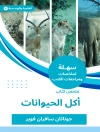In her evocative work, *The Land of Little Rain*, Mary Austin masterfully captures the haunting beauty of the American Southwest, weaving together a tapestry of natural landscapes and the intricate lives of its inhabitants. This collection of essays, steeped in lyrical prose and rich imagery, showcases Austin’s keen observations of the desert’s flora, fauna, and the cultural fabric of its diverse communities. Set against the backdrop of early 20th-century American literature, where regionalism and nature writing were gaining prominence, Austin’s narrative transcends mere description, inviting readers to contemplate the profound connection between humanity and the environment. Mary Austin, a pivotal figure in early environmental literature, was deeply influenced by her upbringing in the stark beauty of California’s deserts. Her experiences as a writer, a feminist, and a social activist informed her perspective on nature and the importance of preserving the natural world. Austin was not only attuned to the physical landscape but also to the spiritual narratives woven into the life of the land, reflecting her commitment to indigenous cultures and their relationship with the earth. *The Land of Little Rain* is a must-read for anyone interested in the intersections of nature, culture, and literature. Austin’s poetic prose invites readers to engage with the delicacy of the desert and consider the broader implications of ecological stewardship. This book is a timeless exploration that remains relevant today, making it an essential addition to any literary or ecological library.
عن المؤلف
Mary Hunter Austin (1868–1934) was an American writer who achieved critical acclaim for her early explorations of the desert Southwest. Her most famous work, ‘The Land of Little Rain’ (1903), is a collection of essays and sketches in which she eloquently articulates the landscapes, life, and culture of the Mojave Desert and the Owens Valley of California. Austin’s writing style is notably infused with poetic imagery and a profound respect for the natural world, setting her apart as an early environmentalist and advocate for Native American rights. Born in Illinois and eventually settling in California, Austin’s work reflects her deep immersion in the environments and communities of which she wrote, contributing valuable perspectives to the naturalist literature of her time. Throughout her career, she published thirty-four books and numerous articles on topics ranging from regionalism to feminism, emphasizing her versatility as a writer and thinker. Her literary contributions extend beyond ‘The Land of Little Rain’, encompassing other notable works such as ‘The Basket Woman’ (1904), ‘Lost Borders’ (1909), and ‘Earth Horizon’ (1932), her autobiography. Austin’s influence endures in the realm of nature writing, and her pioneering efforts have inspired many who endeavor to capture the essence of place in their work.












